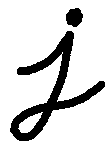Golang : Eroding and dilating image with OpenCV example
I'm learning OpenCV by going through some of the examples found on OpenCV website. For this post, below is an example of Erode and Dilate implementations in Golang.
In a nutshell, Erosion and Dilation are two basic morphological operations that can help in
- Removing noise from input image
- Isolation of individual elements and joining disparate elements in an image.
- Finding of intensity bumps or holes in an image
Also, erosion and dilation can help in reducing the amount of data to be processed, thus speeding up the algorithms that depend on the output images.
For more detailed information, please see the OpenCV tutorial at http://docs.opencv.org/2.4.2/doc/tutorials/imgproc/erosiondilatation/erosiondilatation.html.
An screenshot example of Erode and Dilate operations written in Golang:

You can use this image

(http://docs.opencv.org/2.4.2/images/Morphology1TutorialTheoryOriginalImage.png) for running test with the program below.
Here you go!
package main
import (
"fmt"
"github.com/lazywei/go-opencv/opencv"
"os"
)
var (
originalWindow = new(opencv.Window)
processedImageWindow = new(opencv.Window)
image = new(opencv.IplImage)
processedImage = new(opencv.IplImage)
element *opencv.IplConvKernel
kernelSlider = 5
erodeDilateSlider = 0
kernelSize = 1
)
func process() {
element = opencv.CreateStructuringElement(kernelSize, kernelSize, kernelSize/2, kernelSize/2, opencv.CV_MORPH_RECT)
defer element.ReleaseElement()
if erodeDilateSlider == 0 {
fmt.Printf("Erode by %dx%d\n", kernelSize, kernelSize)
opencv.Erode(image, processedImage, element, 1)
} else {
fmt.Printf("Dilate by %dx%d\n", kernelSize, kernelSize)
opencv.Dilate(image, processedImage, element, 1)
}
processedImageWindow.ShowImage(processedImage)
}
func kernelTrackBar(position int, param ...interface{}) {
kernelSize = position
if kernelSize%2 == 0 {
kernelSize = kernelSize + 1
}
processedImageWindow.SetTrackbarPos("Kernel Size : ", kernelSize)
process()
fmt.Printf("Kernel size = %dx%d\n", kernelSize, kernelSize)
}
func erodeDilateTrackBar(position int, param ...interface{}) {
process()
erodeDilateSlider = position
}
func main() {
if len(os.Args) != 2 {
fmt.Printf("Usage : %s <image filename>\n", os.Args[0])
os.Exit(0)
}
imageFileName := os.Args[1]
fmt.Println("Loading image from ", imageFileName)
fmt.Println("Press ESC key to quit")
image = opencv.LoadImage(imageFileName)
if image == nil {
panic("LoadImage failed")
}
defer image.Release()
originalWindow = opencv.NewWindow("Original Image")
defer originalWindow.Destroy()
processedImageWindow = opencv.NewWindow("Processed Image")
processedImageWindow.Move(200, 300)
defer processedImageWindow.Destroy()
// init with 5x5 kernel size
element = opencv.CreateStructuringElement(5, 5, erodeDilateSlider/2, erodeDilateSlider/2, opencv.CV_MORPH_RECT)
defer element.ReleaseElement()
processedImage = image.Clone()
// 3rd parameter iteration = number of multiple erosions
// we settle for 1
opencv.Erode(image, processedImage, element, 1)
processedImageWindow.CreateTrackbar("Kernel Size : ", 1, 21, kernelTrackBar)
processedImageWindow.CreateTrackbar("Erode(0)/Dilate(1) : ", 0, 1, erodeDilateTrackBar)
originalWindow.ShowImage(image)
processedImageWindow.ShowImage(processedImage)
for {
key := opencv.WaitKey(20)
if key == 27 {
os.Exit(0)
}
}
os.Exit(0)
}
References:
https://www.socketloop.com/tutorials/golang-gaussian-blur-on-image-and-camera-video-feed-examples
https://godoc.org/github.com/lazywei/go-opencv/opencv#Erode
http://docs.opencv.org/2.4.2/doc/tutorials/imgproc/erosiondilatation/erosiondilatation.html
http://docs.opencv.org/2.4.2/images/Morphology1TutorialTheoryOriginalImage.png
See also : Golang : Gaussian blur on image and camera video feed examples
By Adam Ng
IF you gain some knowledge or the information here solved your programming problem. Please consider donating to the less fortunate or some charities that you like. Apart from donation, planting trees, volunteering or reducing your carbon footprint will be great too.
Advertisement
Tutorials
+6.1k Golang : Shuffle array of list
+19.7k Golang : Example for DSA(Digital Signature Algorithm) package functions
+30.7k Golang : Generate random string
+7.7k Android Studio : How to detect camera, activate and capture example
+14k Golang : convert(cast) string to float value
+16.1k Golang : Get current time from the Internet time server(ntp) example
+8.3k Golang : Append and add item in slice
+5.7k PHP : Convert CSV to JSON with YQL example
+16.7k Golang : Get IP addresses of a domain name
+12.3k Golang : md5 hash of a string
+17.2k Golang : How to generate QR codes?
+22k Golang : How to reverse slice or array elements order
